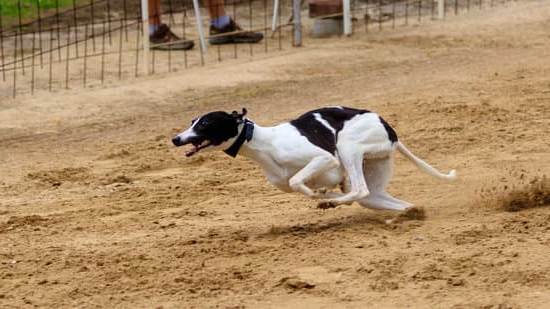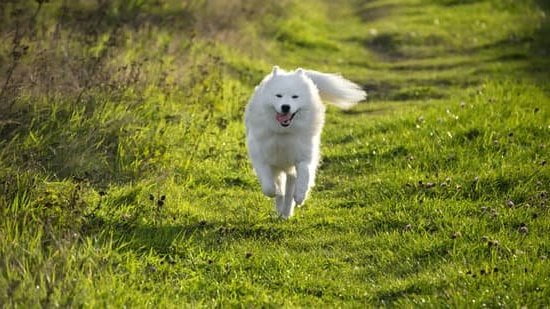Training a dog to be off leash is an essential skill that can provide both freedom and safety for your furry friend. Whether it’s enjoying a hike in the great outdoors or simply playing fetch at the park, having a dog that can reliably obey commands without the restriction of a leash can create a deeper bond between you and your pet.
In this article, we will explore the key steps and techniques to successfully train your dog to be off leash, allowing them to enjoy their surroundings while still maintaining control and obedience.
The benefits of off-leash training for dogs go beyond just allowing them to roam freely. It also promotes physical exercise, mental stimulation, and socialization, contributing to a well-rounded and happy pup. However, embarking on this training journey requires careful consideration of your dog’s individual readiness and temperament. Before diving into advanced techniques, it’s crucial to establish a strong foundation through basic obedience training.
Assessing your dog’s readiness for off-leash training involves understanding their behavior, responsiveness to commands, and overall obedience level. This introductory phase sets the stage for successful off-leash training by laying down the groundwork for positive reinforcement and rewarding good behavior. By following these crucial initial steps, you can pave the way for an enjoyable and fulfilling off-leash experience with your canine companion.
Understanding the Benefits of Off-Leash Training for Dogs
Improved Physical Health
Off-leash training allows dogs to run, play, and explore freely, which contributes to their physical well-being. Regular off-leash exercise helps maintain a healthy weight, promotes cardiovascular health, and builds muscle strength. Additionally, the freedom to roam encourages natural behaviors such as running and fetching, which can improve joint flexibility and overall agility.
Enhanced Mental Stimulation
Off-leash training gives dogs the opportunity to use their senses and explore new environments, promoting mental enrichment. Dogs are able to engage in natural behaviors such as sniffing, digging, and interacting with their surroundings. This mental stimulation can prevent boredom and reduce stress or anxiety-related behaviors that may arise from lack of mental stimulation.
Strengthened Bond With Owner
Off-leash training strengthens the bond between dogs and their owners. When a dog is trained to listen and respond to commands while off-leash, it creates a sense of trust and communication between the dog and owner.
This mutual understanding fosters a deeper connection and sense of companionship, as the dog learns to rely on the owner for guidance and security even in unfamiliar environments. The shared experiences during off-leash activities also create lasting memories that contribute to the overall quality of the relationship.
Assessing Your Dog’s Readiness for Off-Leash Training
Before embarking on off-leash training with your dog, it’s crucial to assess whether your furry friend is ready for this next step. Off-leash training requires a certain level of obedience, focus, and responsiveness from your dog. One way to gauge your dog’s readiness is by observing their behavior during walks and in enclosed spaces.
If your dog consistently follows commands such as “sit,” “stay,” and “come” even when there are distractions, it may be a sign that they are ready for off-leash training. Additionally, dogs that show good recall when called can also be considered prime candidates for off-leash training.
In addition to obedience cues, assessing your dog’s energy levels and behavioral tendencies is essential. High-energy dogs or those with strong prey drive may need more time and patience during off-leash training. It’s important to remember that each dog is unique, and their readiness for off-leash training will vary based on their individual temperament and behavior.
| Readiness Indicators | Description |
|---|---|
| Consistent Obedience | Dog follows basic commands even in distracting environments. |
| Good Recall | Dog returns promptly when called, demonstrating good responsiveness. |
| Energy Levels and Behavioral Tendencies | Assessing the dog’s temperament, energy levels, and potential challenges during off-leash training. |
Basic Obedience Training as a Foundation for Off-Leash Training
Before you begin off-leash training with your dog, it’s crucial to establish a strong foundation of basic obedience training. This foundation will provide the necessary communication and control needed to ensure a successful transition to off-leash behavior. Here are some key aspects of basic obedience training that serve as a solid groundwork for off-leash training:
- Focus and Attention: Teach your dog to focus on you and respond to their name consistently. This will be essential for maintaining control when they are off-leash.
- Commands: Ensure that your dog is responsive to basic commands such as “sit,” “stay,” “come,” and “heel.” These commands will form the basis of their behavior when off-leash.
- Leash Manners: Work on leash walking skills, ensuring that your dog can walk alongside you without pulling or becoming distracted by other stimuli.
In addition to these foundational skills, it’s important to train your dog in various environments with different levels of distractions. Practice in parks, around other dogs, or in busy areas, gradually increasing the level of difficulty as your dog becomes more proficient.
Consistency and positive reinforcement are key components of basic obedience training. Use rewards such as treats, praise, or playtime to reinforce good behavior. By establishing a strong foundation in these fundamental skills, you’ll set the stage for successful off-leash training with your dog.
Gradual Introduction to Off-Leash Training in a Controlled Environment
Setting the Stage
Before beginning off-leash training, it is important to establish a controlled environment where your dog can safely learn and practice being off leash. This could be a fenced-in yard, an empty enclosed area, or a quiet park with minimal distractions. Ensuring that the environment is secure and safe will set both you and your dog up for success during this crucial stage of training.
Starting Slowly
When introducing your dog to off-leash training, it’s important to start slowly and gradually increase the level of freedom as your dog demonstrates understanding and obedience. Begin by letting your dog drag a long line or lightweight leash so that you still have control if needed.
Over time, you can gradually decrease the length of the line until your dog is completely off leash. This gradual approach will help build trust and reliability between you and your furry companion.
Practice Makes Perfect
Consistent practice in a controlled environment is key to successful off-leash training. Spend regular time working on commands and reinforcing good behavior while gradually allowing more freedom for your dog. Remember to always call your dog back to you before giving them any freedom again, reinforcing the habit of returning when called. With patience and practice, you’ll soon see progress in your dog’s ability to handle being off leash in a secure environment.
Using Positive Reinforcement and Rewards to Encourage Off-Leash Behavior
When it comes to training a dog to be off-leash, positive reinforcement and rewards play a crucial role in encouraging the desired behavior. Using these methods can help reinforce the training and create a positive association with being off-leash for your dog. Here are some key strategies for using positive reinforcement and rewards in off-leash training:
- Utilize treats: One of the most effective ways to encourage off-leash behavior is by using high-value treats as a reward. When your dog responds appropriately to being off-leash, give them a tasty treat to reinforce the behavior.
- Use praise and affection: Dogs respond well to praise and affection from their owners. Verbally praising your dog or giving them a belly rub can be just as rewarding as treats, so make sure to shower them with love when they display good off-leash behavior.
- Employ toys and playtime: For some dogs, playtime with their favorite toy can be a powerful motivator. Use toys as a reward for staying close and listening while off-leash, creating an enjoyable experience for your pup.
It’s important to be consistent with the use of positive reinforcement and rewards during off-leash training. This will help your dog understand what is expected of them and make the process more enjoyable for both you and your furry companion. By consistently reinforcing positive behavior, you’ll be well on your way to successfully training your dog to be obedient while off-leash.
Remember that every dog is unique, so finding the right combination of treats, praise, affection, and playtime that motivates your specific pup is essential for successful off-leash training. With patience and perseverance, using positive reinforcement and rewards can lead to a strong bond between you and your dog during off-leash activities.
Troubleshooting Common Challenges in Off-Leash Training
Off-leash training can be a wonderful experience for both dog and owner, but it doesn’t come without its challenges. One common problem that many dog owners encounter is their dog’s lack of responsiveness when off-leash.
This can be due to distractions in the environment, lack of proper training, or even fear or anxiety. To address this challenge, it’s important to gradually build up your dog’s confidence and responsiveness by practicing in low-distraction environments before moving on to more stimulating ones.
Another common issue is a dog’s tendency to wander too far or ignore commands altogether. This can be frustrating for owners, but it’s important to remain patient and consistent. Using high-value treats or toys as rewards can help reinforce positive behavior and encourage your dog to stay close and listen to commands. Additionally, using a long line during training sessions can provide a safety net while still giving your dog the freedom to explore within boundaries.
Finally, some dogs may exhibit aggressive behavior towards other animals or people when off-leash. It’s crucial for owners to recognize signs of aggression and take proactive measures to address this issue through proper socialization or seeking professional help from a certified dog trainer or behaviorist.
Overall, troubleshooting common challenges in off-leash training requires patience, consistency, and understanding of your dog’s individual needs and behaviors. With time and dedication, many of these obstacles can be overcome, leading to a rewarding off-leash experience for both you and your beloved canine companion.
| Common Challenge | Troubleshooting Tips |
|---|---|
| Lack of responsiveness | Gradually build confidence; use high-value treats; practice in low-distraction environments |
| Wandering behavior | Remain patient and consistent; use long line as a safety net; employ rewards for staying close |
| Aggressive behavior | Recognize signs of aggression; seek professional help if needed; focus on proper socialization |
Safety Precautions and Responsible Off-Leash Behavior in Public Spaces
When it comes to off-leash training, safety precautions and responsible behavior in public spaces are crucial for both the dog and its owner. Before allowing your dog off-leash in a public area, it’s important to ensure that your dog is properly trained and responsive to commands. This not only ensures the safety of your dog but also prevents any potential accidents or conflicts with other dogs and people.
One key safety precaution is to always be aware of your surroundings when allowing your dog off-leash in a public space. Ensure that there are no potential hazards such as traffic, toxic plants, or aggressive animals in the vicinity. Additionally, it’s essential to keep an eye on your dog at all times to prevent them from getting into any dangerous situations.
Responsible off-leash behavior also entails being considerate of others who may be sharing the same space. This means having control over your dog at all times and ensuring that they do not approach or bother other people or animals without permission.
Always clean up after your dog by promptly disposing of their waste, and be mindful of any rules or regulations regarding off-leash behavior in the specific public space you are visiting. By being a responsible pet owner, you can help promote positive experiences for both dogs and their owners in shared public areas.
Advanced Off-Leash Training Techniques for Challenging Situations
Once your dog has mastered basic off-leash training in controlled environments, it may be time to introduce more challenging situations. Advanced off-leash training techniques can help your dog respond obediently and confidently even in distracting or stimulating environments.
One technique is to practice off-leash training in a variety of locations with different levels of distractions, such as parks, busy streets, or hiking trails. This will help your dog generalize the behavior and understand that the off-leash commands apply in any situation.
Another advanced technique is to incorporate distance and recall into off-leash training. Practice calling your dog from a distance while off leash, gradually increasing the distance as your dog becomes more reliable with their recall. This will ensure that your dog responds promptly even when they are far away from you. Additionally, introducing obedience cues such as ‘stay’ and ‘heel’ into off-leash training can further enhance your dog’s understanding and responsiveness in challenging situations.
In addition to practicing in various environments and incorporating advanced commands, it is important to continue using positive reinforcement and rewards during advanced off-leash training. By consistently rewarding your dog for obeying commands and exhibiting desirable behavior, you can reinforce their off-leash skills and encourage them to continue listening attentively in challenging situations.
With consistent practice and reinforcement, advanced off-leash training techniques can help strengthen the bond between you and your dog while fostering responsible behavior in any environment.
Conclusion
In conclusion, off-leash training is not only a practical skill for your dog, but it also deepens the bond between you and your pet. By allowing your dog the freedom to roam and explore in a controlled manner, you are fostering trust and communication in your relationship. The partnership between a well-trained off-leash dog and their owner is built on mutual respect and understanding, creating a harmonious and enriching experience for both.
Furthermore, off-leash training allows your dog to fully indulge in their natural instincts, such as running, playing, and exploring their surroundings. The freedom that comes with being off-leash can greatly enhance the mental stimulation and overall happiness of your pet. It provides them with an opportunity to release excess energy, which can lead to improved behavior at home and in social settings.
Overall, celebrating the bond and freedom of off-leash training with your dog is a rewarding journey that requires patience, consistency, and dedication from both you and your furry companion. By following the steps outlined in this article and being mindful of safety precautions, you can create a positive off-leash experience that will strengthen your relationship with your dog while allowing them to enjoy the world around them.
Remember to always celebrate the small victories in training and cherish the special moments of freedom shared with your beloved pet.

Welcome to the blog! I am a professional dog trainer and have been working with dogs for many years. In this blog, I will be discussing various topics related to dog training, including tips, tricks, and advice. I hope you find this information helpful and informative. Thanks for reading!





